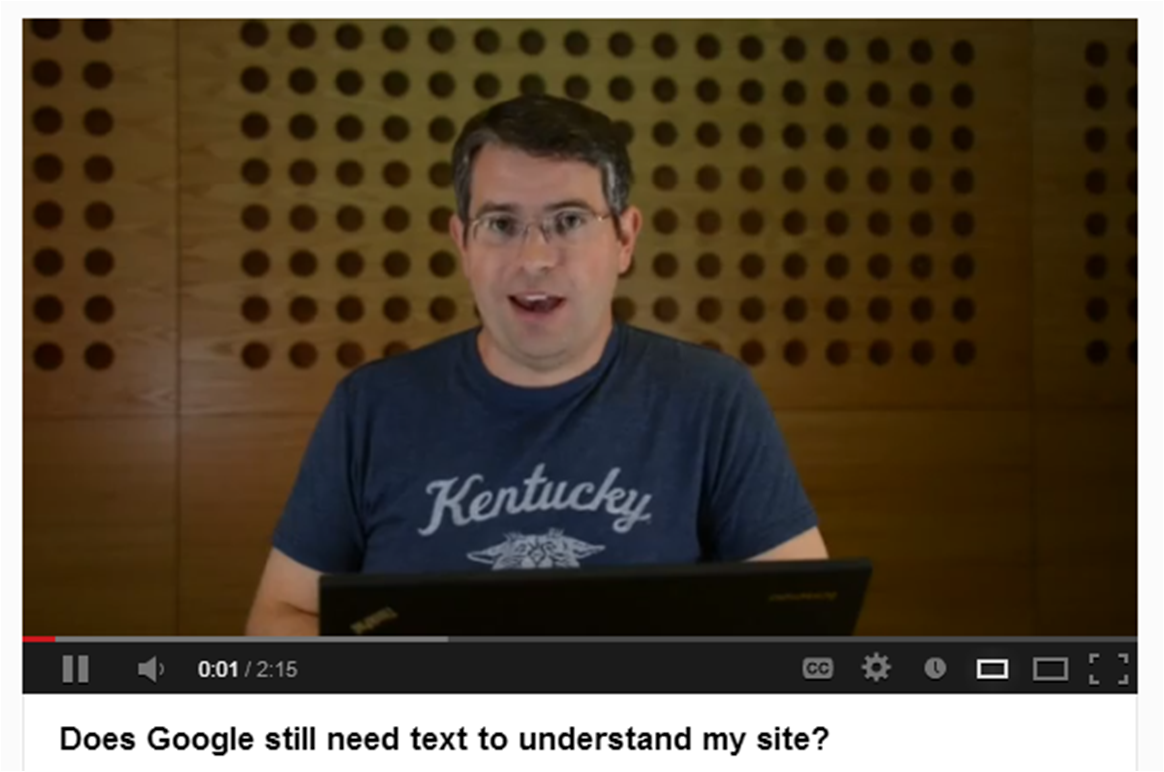Here’s a simple truth: People like pretty things. Consumers’ penchant for good-looking images, websites, graphics and other media is largely responsible for the rise of visual content marketing: Infographics are one of the fastest rising content types and Brafton is constantly reporting on cross-web updates that reward companies for highly visual content (ie: the new News Feed). Visual media is great for users, but marketers who have always valued content for SEO may struggle to leverage images for search visibility.
In a recent Webmaster Central video, one site owner asked Matt Cutts about SEO value from visual content. The site owner pointed out rich graphics and images have given him a lower bounce rate, longer dwell time and more conversions. Even as a visual update to his site improved core success, he was concerned about reaching search audiences, asking:
“Will Google have an issue with the lack of textual content on the site?” – inquiring webmaster
The short answer from Matt Cutts is yes:
“Google does still want text.” – Matt Cutts
Still, Cutts recognized the user demand for images – and isn’t SEO about what’s good for users? He proposed two solutions.
1. Include text content around images. He referred to alt image titles as an example.
Your site might have more user interaction, time on site, conversions – all that stuff – because it’s prettier. We see that better design can help people use and enjoy your site more.
Depending on the type of graphic being used, Brafton also recommends adding accompanying or contextual text in the form of blogs that analyze or explain an infographic, captions that describe a photo, transcripts that let video viewers jump to the insight they most want, etc. (For more information on accompanying text for infographic strategies, check out our related white paper or review our video marketing guide for tips on the SEO side of video content.)
2. Make “really pretty text.” Cutts recommended Google web fonts as a resource for sites to find visually appealing options for text.
Cutts candidly explained that sites shouldn’t move to all images if they’re considering SEO: “At this point, I wouldn’t count on Google being able to do OCR (optical character recognition) of all the images on your site.” He suggested great website design through appealing fonts is a good middle ground for a site that is “pretty but still indexable.”
It may seem what’s good for users and what’s good for search are at odds if Google can’t crawl images. Still, marketers should consider that Cutts took the time to answer this query precisely because Google wants to find ways to reward sites that create good user experiences. His statement that Google can’t do OCR at this point may suggest the search engine is working to adapt its algorithms according to what’s good for users, instead of demanding marketers adapt their sites according to what’s simplest for Google.
Earlier this month at SMX, Cutts and Bing’s Duane Forrester agreed that user experience is increasingly important to SEO. As Forrester put it, “If you want to wow the search engines, you have to wow your customers. Build a site that they want and can use.”




